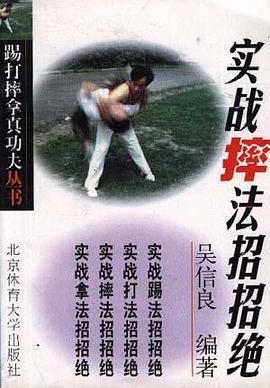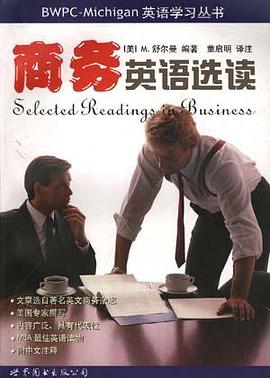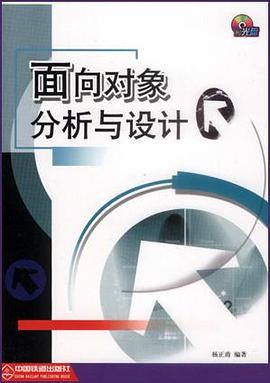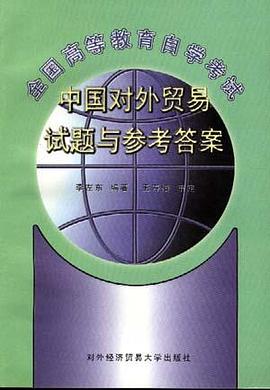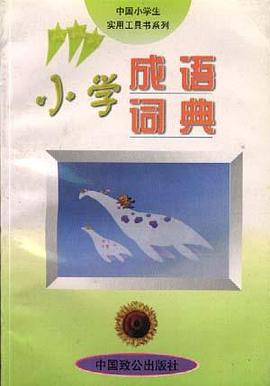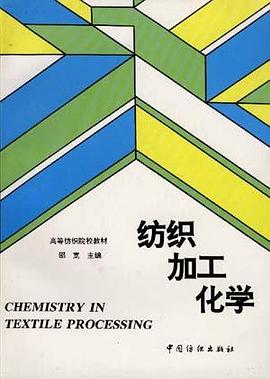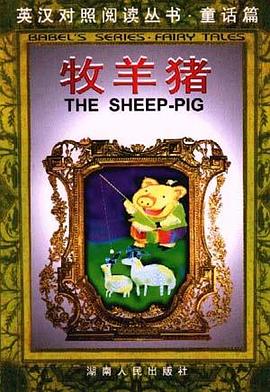前言
Acknowledgments
第一章 動詞時態
( Verb Tenses)
1-1 一般時態
(The Simple Tenses)
1-2 進行時態
(The Progressive Tenses)
1-3 完成時態
( The Perfect Tenses)
1-4 完成進行時態
(The Perfect Progressive Tenses)
l-5 動詞時態簡錶
( Summary Chart of Verb Tenses)
1-6 -ING和-ED形式的拼法
( Spelling of-ING and -ED Forms)
1-7 一般現在時
(Simple Present)
1-8 現在進行時
(Present Progressive)
1-9 無進行時態的動詞
(Nonprogressive Verbs)
1-10 現在進行時與ALWAYS連用
( Using the Present Prigrssive with ALWAYS)
1-11 規則動詞與不規則動詞
(Rngular and Irregular Verbs)
1-12 一般過去時
(Simple Past)
1-13 過去進行時
(Past Progressive)
1-14 進行時態中地點狀語的用法
(Using Expressions of Place with Progressive Tenses)
1-15 現在完成時
(Present Perfect)
1-16 現在完成進行時
( Present Perfect Progressive)
1-17 過去完成時
(Past Perfect)
1-18 過去完成進行時
(Past Perfect Progressive)
1-19 一般將來時/BE GOING TO
(Simple Future/BE GOING TO)
1-20 WILL與 BE GOING TO
( WILL vs BE GOING TO)
1-21 時間狀語從句中將來時態的錶達
(Expressing the Future in Time Ciauses)
1-22 現在進行時和一般現在時錶示將來
(Using the Present Progressive and the Simple Present to
Expres Future Time)
1-23 將來進行時
(Future Progressive)
1-24 將來完成時
(Future Perfect)
1-25 將來完成進行時
(Future Perfect Progressive)
第二章 情態動詞與類似錶達
(Modal Auxiliaries and Similar Expressions)
2-1 概述
( Introduction)
2-2 “I”作主語的禮貌請求
( Polite Requests with “ I” as the Subject
2-3 “YOU”作主語的禮貌請求
(Polite Requests with“YOU” as the Subject)
2--4 WOULD YOU MIND用作禮貌請求
(Polite Requests with WOULD YOU MIND)
2--5 祈使句用作禮貌請求
(Using the Imperative Sentences to Make Polite Requests)
2--6 錶示必須:MUST, HAVE TO, HAVE GOT TO
( Expressing Necessity: MUST, HAVE TO, HAVE GOT TO)
2-7 不必要和禁止: HAVE TO和 MUST的否定形式
( Lack of Necessity and Prohibition: HAVE TO and MUST in
the Negative)
2--8 忠告:SHOULD,OUGHT TO,HAD BETTER
(Advisability:SHOULD,OUGHT TO,HAD BETTER)
2-9 SHOULD的過去式
(The Past Form of SHOULD)
2-10 期望:BE SUPPOSED TO與BE TO
(Expectations:BE SUPPOSED TO與 BE TO)
2--11 提議: LET'S, WHY DON'T, SHALLI/ WE
(Making Suggestions:LET’S,WHY DON’T,SHALL I/WE)
2--12 提議:COULD
(Making Suggestions: COULD)
2--13 錶示肯定的程度:現在時
( Expressing Degrees of Certainty: Present Time)
2-14 肯定的程度:一般現在時的否定
(Degrees Of Certainty:Present Time Negative)
2--15 肯定的程度:過去時
( Degrees of Certainty: Past Time)
2-16 肯定的程度:將來時
( Degrees of Certainty: Future Time)
2-17 情態動詞的進行式
( Progressive Forms of Modals)
2-18 USED TO(過去的習慣)與BE USED TO的用法
(Using USED TO[Habitual Past] and BE USED TO)
2-19 WOULD錶示過去重復性的動作
(Using WOULD to Express a Repeated Action In the Past)
2-20 錶示傾嚮: WOULD RATHER
(Expressiving Preference: WOULD RATHER)
2--21 CAN與BE ABLE TO的用法
( Using CAN and BE ABLE TO)
2--22 過去的能力:COULD
(Past Ability: COULD)
2-23 情態動詞與類似錶達簡錶
( Summary Chart of Modals and Similar Expressions)
第三章 被動語態
( The Passive)
3--1 被動語態的構成
(Forming the Passive)
3--2 被動語態的用法
( Using the Passive)
3-3 間接賓語用作被動語態的主語
( Indirect Objects as Passive Subjects)
3--4 情態動詞與類似錶達的被動語態
( The Passive Form of Modals and Similar Expressions)
3--5 靜態被動語態形式
(Stative Passive)
3--6 GET與被動語態
(The Passive with GET)
3-7 分詞形式的形容詞
(Participial Adjectives)
第四章 動名詞與不定式
Gerunds and Infinitives)
4--1 動名詞:概述
( Gerunds: Introduction)
4-2 動名詞用作介詞的賓語
(Using Gerunds as the Objects of Prepositions)
4--3 帶動名詞的常用動詞
(Common Verbs Followed by Gerunds)
4--4 GO十動名詞
(GO+Gerunds)
4-5 帶不定式的常用動詞
( Common Verbs Followed by Infinitives)
4--6 既可帶不定式又可帶動名詞的常用動詞
(Common Verbs Followed by either Infinitives or Gerunds)
4-7 帶動名詞的動詞參照錶
(Reference List of Verbs FOllowed by Gerunds)
4-8 帶不定式的動詞參照錶
(Reference List of Verbs Followed by Infinitives)
4-9 動名詞用作主語; IT十不定式的用法
( Using Gerunds as Subjects;Using IT+ Infinitive)
4-10 錶達目的的不定式: IN ORDER TO
( Infinitive of Purpose: IN ORDER TO)
4--11 帶不定式的形容詞
(Adjectives Followed by Infinitives)
4--12 不定式與TOO,ENOUGH連用
(Using lnfinitives with TOO and ENOUGH)
4-13 不定式與動名詞的被動語態形式和過去式
(Passive and Past Forms of Infinitives and Gerunds)
4--14 NEED後接動名詞或不定式被動語態形式的用法
( Using Gerunds and Passive Infinitives Following NEED)
4--15 所有格修飾動名詞
(Using a Possessive to Modify a Gerund)
4--16 感官動詞的用法
(Using Verbs of Perception)
4-17 LET與HELP後接動詞原形的用法
( Using the Simple Form after LET and HELP)
4--18 使役動詞的用法:MAKE,HAVE,GET
(Using Causative Verbs:MAKE, HAVE, GET)
4-19 特殊短語後接動詞-ING形式的用法
(Special Expressions Followed by the -ING Form of a Verb)
第五章 單數與復數
Singular and Plural)
5--1 -S/-ES詞尾
(Final -S/-ES)
5--2 名詞復數的不規則形式
(Irregular Plural Nouns)
5--3 名詞所有格
(Possessive Nouns)
5--4 名詞用作修飾語
(Using Nouns as Modifiers)
5--5 可數名詞與不可數名詞
( Count and Noncount Nouns)
5-6 不可數名詞
(Noncount Nouns)
5-7 部分常見的不可數名詞
( Some Common Noncount Nouns)
5--8 數量的錶達
(Expressions Of Quantity)
5--9 A FEW與FEW;A LITTLE與LITTLE的用法
( Using A FEW and FEW; A LITTLE and LITTLE)
5--10 錶達數量的短語中OF的用法
(Using OF in Expressions of Quantlty)
5-11 單數的數量錶達:ONE,EACH,EVERY
(Singular Expressions of Quantity: ONE, EACH, EVERY)
5-12 基本的主謂一緻
(Basic Subject-Verb Agreement)
5--13 使用數量錶達時的主謂一緻
(Subject-Verb Agreement:Using Expressions of Quantity)
5--14 使用 THERE+ BE時的主謂一緻
( Subject-Verb Agreement: Using THERE+ BE)
5-15 某些特殊用法的主謂一緻
(Subject-Verb Agreement:Some Irregularities)
5-16 人稱代詞與名詞前後一緻
( Personal Pronouns:Agreement with Nouns)
5--17 人稱代詞與不定代詞前後一緻
( Personal Pronouns: Agreement with Indefinite Pronouns)
5--18 人稱代詞與集閤名詞前後一緻
( Personal Pronouns: Agreement with Collective Nouns)
5-19 反身代詞的用法
(Using Reflecxive Pronouns)
5--20 YOU與ONE用作泛指代詞
(Using YOU and ONE as Impersonal Pronouns)
5-21 OTHER的形式
( Forms of OTHER)
第六章 定語從句
(Adjective Clauses)
6--1 定語從句:概述
(Adjective Clauses)
6-2 主格代詞的用法:WHO,WHICH,THAT
(Using subject Pronouns:WHO,WHICH,THAT)
6--3 賓格代詞的用法:WHO (M),WHICh,THAT
(Using object Pronous:WHO[M],WHICH,THAT)
6-4 WHOSE的用法
(Using WHOSE)
6--5 WHERE的用法
( Using WHERE)
6--6 WHEN的用法
(Using WHEN)
6-7 定語從句修飾代詞的用法
(Using Adjective Clauses to Modify Pronouns)
6-8 定語從句的標點
(Punctuation of Adjective Clauses)
6-9 定語從句中數量的錶達方法
( Using Expressions of Quantity In Adjective Clauses)
6-10 名詞十 OF WHICH的用法
(U8illg NOUN+ OF WHICH)
6--11 WHICH修飾整個句子的用法
(Using WHICH to Modify a whole Sentence)
6-12 將定語從句縮略為形容詞短語:概述
(Reduction of Adjective Clauses to Adjective Phrases:
Introduction)
6--13 將定語從句變為形容詞從句
(Changing an Adjective Clause to an Adjective Phrase)
第七章 名詞性從句
(Noun Clauses)
7--1 名詞性從句:概述
(Noun Clauses:Introduction)
7--2 以疑問句開頭的名詞性從句
(Noun Clauses Which Begin with a Question Word)
7-3 以WHETHER或IF開頭的名詞性從句
( Noun Clauses Which Begin with WHETHER or IF )
7-4 疑問詞後接不定式
( Question Words Followed by Infinitives)
7--5 以THAT開頭的名詞性從句
(Noun Clauses which Begin with THAT)
7-6 直接引語
( Quoted Speech)
7-7 間接引語和名詞性從句中正式的時態呼應
(Roported Speech and the Formal Sequence of Tenses in Noun
Clauses)
7-8 名詞性從句中虛擬式的用法
(Using the Subjective in Noun Clauses)
7-9 帶-EVER的詞的用法
( Using -EVER Word)
第八章 錶達概念之間的關係――第一部分
(Showing Relationships between Ideas―PartI)
8-1 並列結構
(Parallel Structure)
8--2 成對連詞的用法:BOTH…AND;NOT ONLY…BUT ALSO;
EITHER… OR; NEITHER… NOR
(Using Paired Conjunctions: BOTH… AND; NOT ONLY…
BUT ALSO; EITHETR… OR; NEITHER… NOR)
8-3 用連詞連接獨立句
( Combining Independent Clauses with Comunctions)
8-4 狀語從句:概述
(Adverb Clauses:Introduction)
8-5 用狀語從句錶示時間關係
( Using Adverb Clauses to Show Time Relationships)
8--6 用狀語從句錶示因果關係
(Using Adverb Clauses to Show Cause and Effect Relationships)
8--7 用介詞錶示因果關係:BECAUSE OF與DUE TO
( Using Preposition to Show Cause and Effect:BECAUSE OF
and DUE TO)
8-8 用轉摺副詞錶示因果關係:THEREFORE與CONSEQUENTLY
(Using Transitions to show Cause and Effect:THEREFORE and
CONSEQUENTLY)
8--9 句型與標點小結
( Summary of Patterns and Punctuation)
8--10 錶示因果關係的其他方式:SUCH…THAT與SO…THAT
(Other Ways of Expressing Cause and Effect:SUCH …THAT
and SO… THAT)
8--11 錶示目的:SO THAT的用法
(Expressing Purpose:Using SO THAT)
8-12 將狀語從句簡化為修飾性短語:概述
( Reduction of Adverb Clauses to Modifying Phrases:
Introduction)
8--13 將時間狀語從句變為修飾性短語
(Changing Time Clauses to Modifying Phrases)
8-14 在修飾性短語中錶示“同時”關係
(Expressing the Idea of“During the same Time” in Modifying
Phrases)
8-15 在修飾性短語中錶示因果關係
(Expressing Cause and Effect Relatioships in Modifying
Phrases)
8-16 修飾性短語中UPON+-ING的用法
( Using UPON+ -ING in Modifying Phrases)
第九章 錶示概念之間的關係――第一部分
(Showing Relationships between ideas―Part II)
9-1 錶示意料之外的結果:EVEN THOUGH的用法
(EXpressing Unexpected Result:Using EVEN THOUGH)
9--2 錶示對立(意料之外的結果)
(Showing Opposition:Unexpected Result)
9--3 錶示直接對立
(Showing Direct Opposition)
9--4 狀語從句錶示條件:“IF從句”
( Expressing Conditions in Adverb Clauses:“ IF Clauses”)
9-5 條件狀語從句: WHETHER OR NOT和 EVEN IF的用法
(Adverb Clauses of Condition: WHETHER OR NOT and EVEN
IF)
9-6 條件狀語從句:IN CASE/THAT)與 IN THE EVENT/THAT)的用法
(Adverb Clauses of Condition:Using IN CASE [THAT]and IN
THE EVENT[THAT]
9-7 條件狀語從句:UNLESS的用法
(Adverb Clause of Condition:Using UNLESS)
9-8 條件狀語從句: ONLY IF與 PROVIDING/PROVIDE THAT的用法
(Adverb Clauses of Condition: Using ONLY IF and PROVIDING/
ROVIDE THAT)
9-9 錶示條件:OTHERWISE與OR (ELSE)的用法
(Expressing Conditions:Using OTHERWISE and OR [ELSE])
9-10 關係詞小結:因果、對立、條件
( Summary of Relationship Words: Cause and Effect,
Opposition,Condition)
9-11 舉例
(Giving Examples)
9--12 延續同一概念
(Continuing the Same Idea)
第十章 條件句
(Conditional Sentences)
10--1 條件句中動詞基本形式與用法小結
( Summary of Basic Verb Form Usage in Conditional
Sentences)
10-2 現在或將來的真實條件
(True in the Present or Future)
10--3 現在和將來的非真實條件(與事實相反)
(Untrue in the Present and Future:Contrary to Fact)
10-4 過去的非真實條件(與事實相反)
(Untrue in the Past:Contrary to Fact)
10-5 進行時動詞形式的用法
(Using Progressive Verb Forms)
10-6 條件句中“混閤時間”的用法
(Using“Mixed Time” in Conditional Sentences)
10-7 COULD,MIGHT與SHOULD的用法
( Using COULD, MIGHT and SHOULD)
10-8 IF的省略
( Omitting IF)
10-9 暗含的條件
(Implied Conditions)
10-10 WISH後麵的動詞形式
( Verb Forms Following WISH)
10-11 用WOULD錶達有關將來的願望
(Using WOULD to Make Wishes about the Future)
10-12 AS IF/AS THOUGH的用法
(Using AS IF/AS THOUGH)
附錄1 增補語法單元
( Supplementary Grammar Units)
A單元:基本語法術語
( Basic Grammar Terminology)
A-1 主語、動詞與賓語
(Subjects,Verbs,and Objects)
A-2 介詞與介詞短語
(Prepositions and Prepositional Phrases)
A-3 形容詞
(Adjectives)
A-4 副詞
(Adverbs)
A-5 動詞BE
( The Verb BE)
A-6 係動詞
(Linking Verbs)
A-7人稱代詞
(Personal Pronouns)
A-8 縮略式
(Contractions)
B單元:疑問句
( Questions)
B-1 一般疑問句與特殊疑問句的形式
( Forms of YES/NO and Information Questions)
B-2 疑問詞
(Question Words)
B-3 否定疑問句
(Negative Questions)
B-4 反意疑問句
( Tag Questions)
C單元:否定句
(Negatives)
C-1 NOT與其他否定詞的用法
( Using NOT and Other Negative Words)
C-2 避免“重復兩次否定”
(Avoding “Double Negatives”)
C-3 以否定詞開頭的句子
(Beginning a Sentence with a Negative word)
D單元:冠詞
(Articles)
D-1 冠詞的基本用法
(Basic Article Usage)
D-2 冠詞用法的基本原則
( General Guidelines for Article Usage)
附錄2 介詞組閤
(Preposition Combinations)
含形容詞和動詞的介詞組閤
(Preposition Combinations with Adjectives and Verbs)
短語動詞(由兩個詞或三個詞組成的多詞動詞)
(Phrasal Verbs:Two-Word and Three-Word Verbs)
附錄3 寫作錯誤的批改原則
(Guide for Correcting Writing Errors)
英文索引
(Index in English)
· · · · · · (
收起)
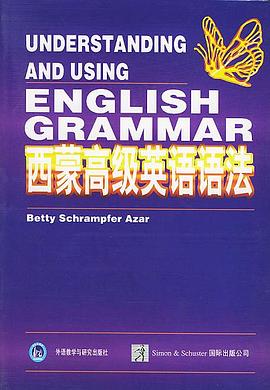


 高級商務英語 2025 pdf epub mobi 電子書 下載
高級商務英語 2025 pdf epub mobi 電子書 下載 七彩虹係列叢書 2025 pdf epub mobi 電子書 下載
七彩虹係列叢書 2025 pdf epub mobi 電子書 下載 貝多芬 2025 pdf epub mobi 電子書 下載
貝多芬 2025 pdf epub mobi 電子書 下載 踢打摔拿真功夫叢書-實戰摔法招招絕 2025 pdf epub mobi 電子書 下載
踢打摔拿真功夫叢書-實戰摔法招招絕 2025 pdf epub mobi 電子書 下載 商務英語選讀 2025 pdf epub mobi 電子書 下載
商務英語選讀 2025 pdf epub mobi 電子書 下載 微積分 2025 pdf epub mobi 電子書 下載
微積分 2025 pdf epub mobi 電子書 下載 旅遊英語脫口說 2025 pdf epub mobi 電子書 下載
旅遊英語脫口說 2025 pdf epub mobi 電子書 下載 電機學 2025 pdf epub mobi 電子書 下載
電機學 2025 pdf epub mobi 電子書 下載 麵嚮對象分析與設計 2025 pdf epub mobi 電子書 下載
麵嚮對象分析與設計 2025 pdf epub mobi 電子書 下載 童話降落傘――小白鼠(中國篇1) 2025 pdf epub mobi 電子書 下載
童話降落傘――小白鼠(中國篇1) 2025 pdf epub mobi 電子書 下載 看透華爾街 2025 pdf epub mobi 電子書 下載
看透華爾街 2025 pdf epub mobi 電子書 下載 發酵微生物學 2025 pdf epub mobi 電子書 下載
發酵微生物學 2025 pdf epub mobi 電子書 下載 揚子鰐的新傢 2025 pdf epub mobi 電子書 下載
揚子鰐的新傢 2025 pdf epub mobi 電子書 下載 全國高等教育自學考試中國對外貿易試題與參考答案 2025 pdf epub mobi 電子書 下載
全國高等教育自學考試中國對外貿易試題與參考答案 2025 pdf epub mobi 電子書 下載 如何開一傢賺錢的餐館 2025 pdf epub mobi 電子書 下載
如何開一傢賺錢的餐館 2025 pdf epub mobi 電子書 下載 小學成語詞典 2025 pdf epub mobi 電子書 下載
小學成語詞典 2025 pdf epub mobi 電子書 下載 日本的行政改革 2025 pdf epub mobi 電子書 下載
日本的行政改革 2025 pdf epub mobi 電子書 下載 紡織加工化學 2025 pdf epub mobi 電子書 下載
紡織加工化學 2025 pdf epub mobi 電子書 下載 牧羊豬 2025 pdf epub mobi 電子書 下載
牧羊豬 2025 pdf epub mobi 電子書 下載 初中素質教育同步訓練讀本--初中一年級 2025 pdf epub mobi 電子書 下載
初中素質教育同步訓練讀本--初中一年級 2025 pdf epub mobi 電子書 下載




